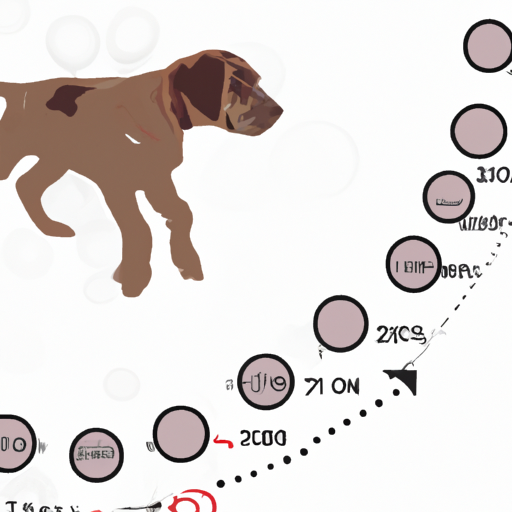Understanding the growth rate of your furry friend can be both an exciting and daunting task. If you’re reading this, we bet you’re asking yourself, “At what age is my dog full-grown?” Well, you’re in the right place.
Understanding Your Dog’s Growth
Every dog is unique, and so is their growth pattern. From the tiny Chihuahua to the towering Great Dane, each breed has its growth timeline.
Generally, dogs grow rapidly during their first six months, slowing down as they approach maturity. However, the time it takes to reach full growth varies depending on the dog’s breed and size.
Let’s break it down:
- Small Breeds: Dogs like Pomeranians and Toy Poodles, usually reach full size between 6 to 8 months.
- Medium Breeds: Breeds like Border Collies and Beagles, are typically fully grown by 12 months.
- Large Breeds: Larger dogs, such as Labrador Retrievers and German Shepherds, might not finish growing until 18 months.
- Giant Breeds: The biggest breeds, including Saint Bernards and Great Danes, may keep growing until they are 2-3 years old!
Recognizing the Signs of Growth
You might be wondering how you can tell if your four-legged friend has stopped growing. Here are some signs to look out for:
- Weight: An obvious indicator is when your dog’s weight stabilizes.
- Height: Your dog’s height can also be a good indicator. When they’ve reached their full height, they usually stop growing.
- Teeth: By 6 months, most puppies have their full set of adult teeth. This often coincides with the end of their most rapid growth phase.
Effects of Nutrition on Growth
Your dog’s diet plays a crucial role in their development. Puppies need a diet rich in protein, fats, and certain minerals to grow healthy and strong.
However, overfeeding or underfeeding can result in health problems. Overfeeding can lead to obesity and bone disorders, especially in large breed puppies. Underfeeding, on the other hand, can result in developmental issues due to nutrient deficiencies.
The Role of Neutering/Spaying on Growth
Neutering or spaying your dog can affect their growth. It’s been observed that dogs neutered or spayed before they stop growing may end up slightly taller than their unaltered counterparts.
This is because sex hormones play a role in signaling the growth plates to close. Removing these hormones through neutering or spaying can extend the period of growth.
Health Risks Associated with Growth
Rapid growth in puppies, especially in large breeds, can lead to several health risks. These include joint problems such as hip and elbow dysplasia, and a condition called Panosteitis, also known as “growing pains.”
It’s crucial to keep an eye on your dog’s growth and consult with your vet if you notice any signs of discomfort or abnormal growth.
FAQ Section
Here are some commonly asked questions about dog growth:
1. Can I determine my dog’s adult size based on their puppy size?
Not exactly. While puppy size can give a rough estimate, it’s not an accurate predictor of adult size. Genetics play a major role in determining a dog’s full-grown size.
2. How big will my mixed breed puppy get?
Predicting the adult size of a mixed breed puppy can be challenging. One way to estimate is to consider the size of the parents if known. Alternatively, a vet can give an educated guess based on the puppy’s current size and breed composition.
3. What if my dog is growing too fast or too slow?
If you’re concerned about your puppy’s growth rate, it’s best to consult with a vet. They can determine if your pup is growing at a healthy rate or if any adjustments to their diet or care are needed.
Remember, every dog is unique and grows at their own pace. Your job as a caregiver is to provide them with the love, care, and nutrition they need to grow into a healthy, happy adult dog.



